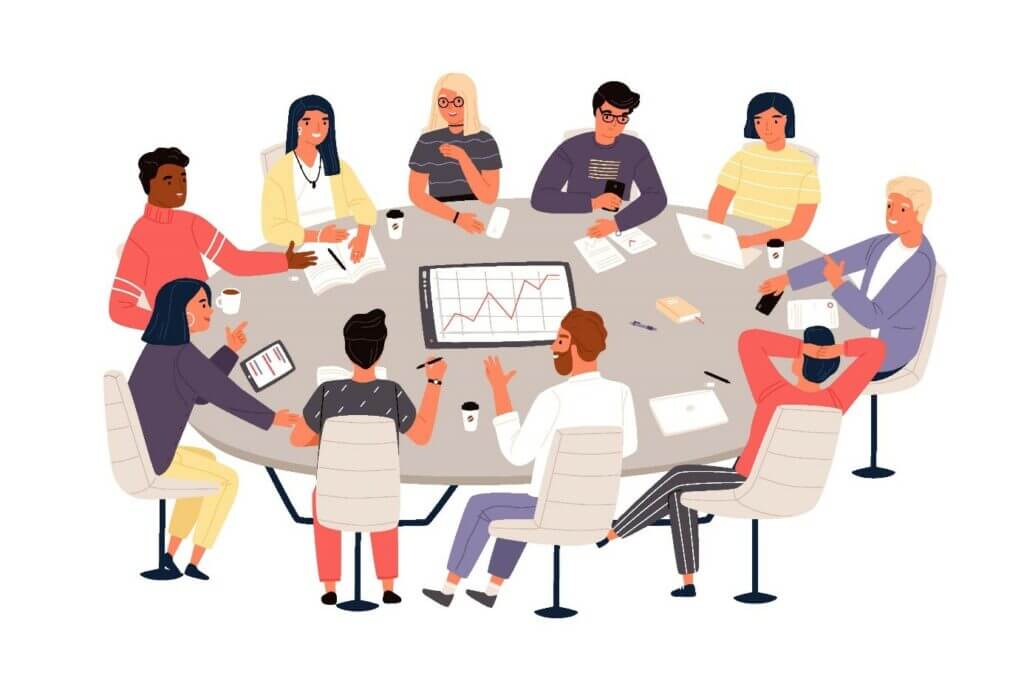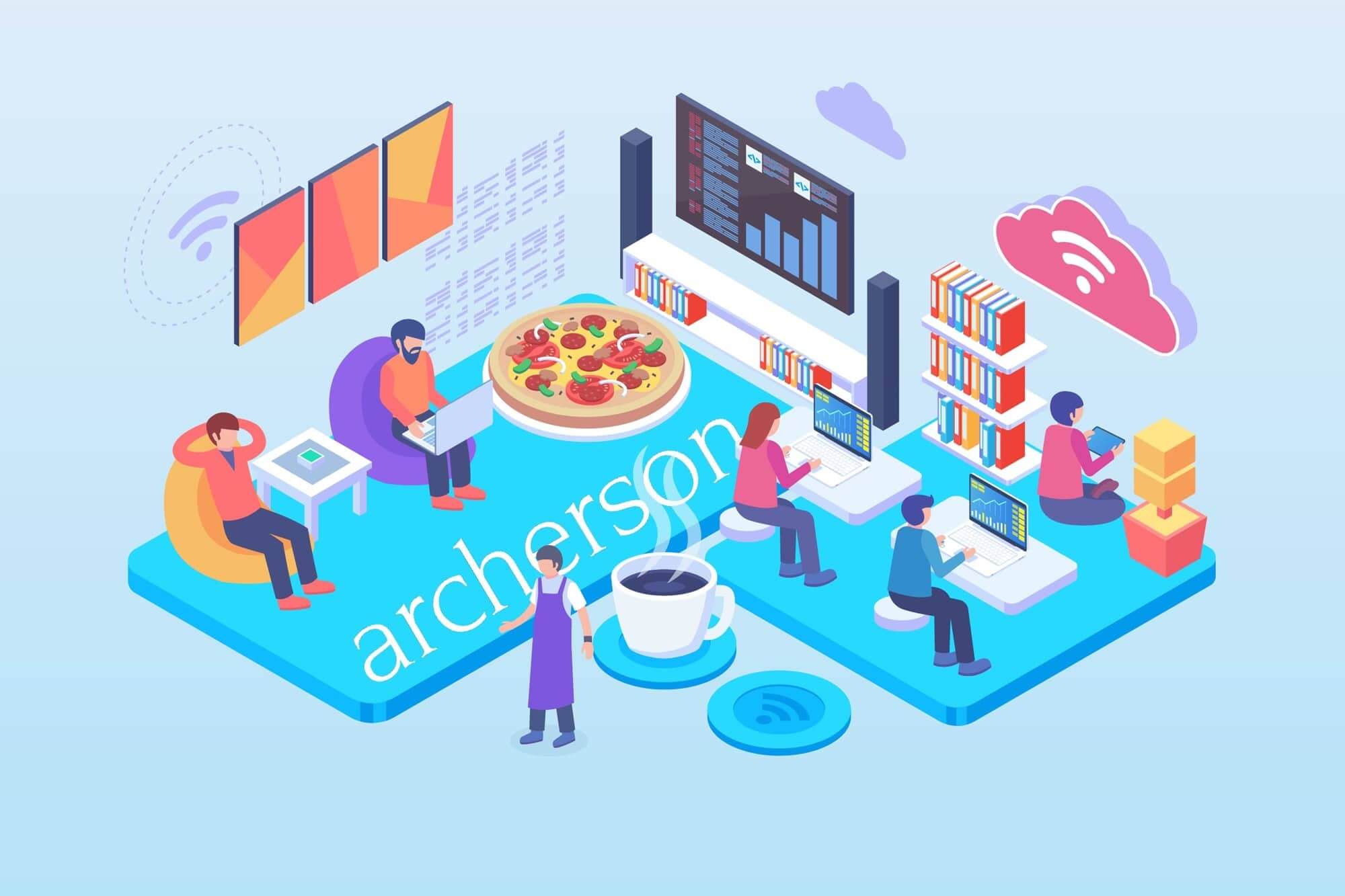
In this article, we will examine the definition, aims, tools and benefits of organizational communication. First, let's define the organization. Organizations are structures that established to achieve certain goals. The word organization can be defined in a narrow and broad sense. Organization in the narrow sense; to determine the necessary studies for any purpose and to organize these studies in the form of group relations. In a broad sense, the organization is; It is the structure that brings together the physical means and possibilities of people in a way to achieve a certain purpose.Communication is the transfer of messages from source to destination. Communication in organizations/institutions has four basic functions. These functions are; information function, motivation function, control function and excitability function. Organizational communication is an integral part of every organization and plays an important role in building a successful business. Communication and people's behavior within an organization affects the operation of the entire organization, and communication in an organization is vital. Organizational communication is a field of study that measures the information flow and communication in the workplace in communication studies. Communication between members, individuals and organizations can be formal or informal.This area; business information, information flow in the workplace, business communication, and early mass media publications from the 1930s to the 1950s. Prior to this, organizational communication was mostly a topic that some professors had several times in their speeches. When we talk about organizational communication right now, we are talking about an independent field with its own theories and empirical concerns.
Organizational communication is an integral part of every organization and plays an important role in building a successful business. Communication and people's behavior within an organization affects the operation of the entire organization, and communication in an organization is vital. Organizational communication is a field of study that measures the information flow and communication in the workplace in communication studies. Communication between members, individuals and organizations can be formal or informal.This area; business information, information flow in the workplace, business communication, and early mass media publications from the 1930s to the 1950s. Prior to this, organizational communication was mostly a topic that some professors had several times in their speeches. When we talk about organizational communication right now, we are talking about an independent field with its own theories and empirical concerns.
The Importance of Organizational Communication
In order for organizations to achieve the determined goals, the elements of the organization must be brought together in line with this purpose. This can be achieved through the organizational organization of management through a set of activities. The most basic element of every organization and coordination function is communication.If a successful communication cannot be established within the organization, employees cannot know the actions of their colleagues, and this causes the realization of activities that may cause problems in the short and long term, such as doing the same action more than once, not taking the necessary action for the organization, or leaving the job description of the employees.The fulfillment of managerial and organizational activities is possible thanks to organizational communication. Thanks to communication, it successfully fulfills the planning, organizing, directing and controlling functions of management. Communication is a managerial activity for managers. Communication in Organizations; It provides information for directing, planning, organizing, motivating and controlling between departments. Organizational communication is the main purpose of efficient and effective fulfillment of all organizational and managerial activities.
Functions of Organizational Communication
Information Providing Function of Communication
Persuasion and Influencing Function of Communication
Tutorial Communication
The Unification and Coordination Function of Communication

Objectives of Organizational Communication
To inform the individuals in the organization about the goals, policies and objectives of the organization.To facilitate the learning process by providing information about work and operations and to ensure that the functions within the organization become more efficient.Informing the employees about the emotional and conflicting issues within the organization and ensuring that actions are taken for correct problem resolution.Motivating employees to provide feedback to management on improving functions within the organization, based on their experience, intuition, observation and reasoning.To inform and enlighten the employees on issues such as promotion opportunities at work, developments related to the work, and expectations for the future. In this way, to increase the efficiency of the organization by increasing the motivation of the employees about their work and their commitment to the organization.To enlighten the employees about the activities of the organization, important events and decisions, achievements. When employees are involved in the decisions made by their companies, their motivation to work and their commitment to the organization increase, which ultimately leads to an increase in the efficiency of the organization.
Ways to Improve Organizational Communication
We explained the definition, importance, functions and purposes of organizational communication. Now we will see how we can improve organizational communication in organizations.Organizations use various communication technologies to improve organizational communication and to be effective in communication. Especially with the development of technology, companies use different communication channels among themselves. The systematic use and development of these channels improves organizational communication. Networks established within the company make communication within the organization much easier. Today, these communication networks are influenced by technology and are shaped accordingly, establishing an easier, faster and more advanced system. As everyone knows, one of these communication technologies is electronic mail. Technology is a factor that affects our daily life as well as our organizational communication. With e-mail, which is a very cheap and fast communication tool, you can communicate with one or more people at the same time and ensure that the employees of the organization have information about the subject. E-mail is one of the most common communication tools used in organizational communication. The fact that e-mail can be stored and read at any time later has made e-mail attractive in the organizational communication process. It also provides the opportunity to file and archive. Continuously informing the departments within the company via e-mail and the right departments constantly e-mailing each other on the determined issues will be a situation that strengthens organizational communication and increases the efficiency of the organization.Apart from this, regular meetings within different departments and with other departments, determining and developing the level of daily, weekly and monthly communication. Holding meetings about the goals and objectives of the organization by understanding and developing them by each employee, and taking actions with the management also improve organizational psychology may be factors.
With e-mail, which is a very cheap and fast communication tool, you can communicate with one or more people at the same time and ensure that the employees of the organization have information about the subject. E-mail is one of the most common communication tools used in organizational communication. The fact that e-mail can be stored and read at any time later has made e-mail attractive in the organizational communication process. It also provides the opportunity to file and archive. Continuously informing the departments within the company via e-mail and the right departments constantly e-mailing each other on the determined issues will be a situation that strengthens organizational communication and increases the efficiency of the organization.Apart from this, regular meetings within different departments and with other departments, determining and developing the level of daily, weekly and monthly communication. Holding meetings about the goals and objectives of the organization by understanding and developing them by each employee, and taking actions with the management also improve organizational psychology may be factors. It will be seen that the non-work activities to be carried out with the individuals in the organization, whether inside the organization or outside the organization, will also increase the motivation and organizational commitment, and it will be seen that this directly strengthens the organizational communication.
It will be seen that the non-work activities to be carried out with the individuals in the organization, whether inside the organization or outside the organization, will also increase the motivation and organizational commitment, and it will be seen that this directly strengthens the organizational communication. Organizational communication is one of the most important elements in an organization and actions should be taken for its continuous improvement. Improving organizational communication will increase employee loyalty and job satisfaction, thus increasing your brand value by causing better communication with stakeholders and customers, and will therefore become an issue that will increase company efficiency and income.
Organizational communication is one of the most important elements in an organization and actions should be taken for its continuous improvement. Improving organizational communication will increase employee loyalty and job satisfaction, thus increasing your brand value by causing better communication with stakeholders and customers, and will therefore become an issue that will increase company efficiency and income.



 30/06/2022
30/06/2022